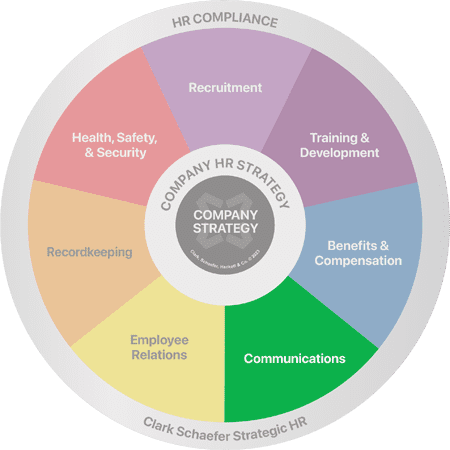Tips For How To Have Difficult Conversations With Employees

HR Question:
Each time I take on a new role managing staff, I find myself needing to have difficult conversations with employees about sensitive issues. I’ve had to deal with hygiene issues, someone who wore too much perfume, and even someone who wore an unsightly shirt every single day. What is the best way to deal with these issues and talk with employees about these sensitive topics that are impacting others?
HR Answer:
Most business leaders will tell you that having difficult conversations with employees is one of the most challenging aspects of their leadership position. Whether it’s a team member with a notable hygiene issue or a co-worker with an exceptionally sensitive sense of smell, these interpersonal issues are disruptive to business, and we all wish they would just disappear!
It’s human nature to want to avoid that which we find unpleasant, and most of us would rather have a root canal than have a discussion about another person’s body odor. Great leaders understand that avoidance fosters a culture where issues are allowed to become toxic and spread, potentially impacting the entire team. To truly create change, it is important to be sensitive to the concerns of the individuals involved and handle the difficult conversation with a calm professional demeanor.
Build Trust From the Beginning
The best preparation begins long before the sensitive problem even occurs! Building trusting relationships with your team members early on will make difficult conversations less awkward and more productive.
One way to build trust and establish open lines of communication with your employees is to hold frequent and regularly scheduled one-on-one conversations with them. As an additional benefit, maintaining regular communication with your team members may allow you an opportunity to identify potential areas for concern and proactively address these situations before they escalate into a more serious problem.
How to Prepare for Difficult Conversations with Employees
When a sensitive problem does occur and a tough conversation is warranted, you should address the issue promptly, yet also take the time to fully evaluate the situation and properly prepare for the conversation. Review the details and facts as you are aware of them with the understanding that there is likely more to the story that you will need to uncover in your discussion with the employee.
Also, find the right words to tactfully address the concerns that have been raised and brainstorm potential responses and solutions ahead of the meeting. Approach the conversation from a place of empathy and avoid making assumptions as to the root of the problem.
Suggestions on how to have a respectful and productive discussion:
- Make sure the employee knows it is not a disciplinary meeting but rather a coaching conversation.
- Meet with the employee in a private location without interruptions where you can explain the problem and how it affects the workplace. Have items such as water and facial tissues available if needed.
- Allow the employee to lead the conversation which may result in an apology, learning they were not aware of the situation, or possibly a personal discussion as to why the person is having the issue.
- Be open to the possibility that the employee may have a disability or religious or cultural factors that are impacting the situation at hand (hygiene, for example).
- If they aren’t readily forthcoming in your conversation, try to understand the root of the issue by gently guiding them and allowing them plenty of time to open up.
- Holding the meeting at the end of the day may be best as it will allow the employee to leave immediately afterward.
- Be compassionate and focus on the company’s future expectations.
- Emotions may run high. If it seems the employee is struggling with the information, allow the employee time to process the information on their own. Offer to have a follow up meeting to continue the discussion once they have had time to think about it.
Don’t Fall Into These Complaint Pitfalls
While it is vital for managers to proactively address these issues, it is also important to do so without jumping to conclusions. It must be noted that it is not always the subject of the complaint that needs to be addressed. Be careful when handling issues to ensure that there is validity to the complaint and that it wasn’t a result of one overly sensitive employee, or worse yet – a bully.
Additionally, don’t allow employees to play what Marlene Chism calls “Power of Attorney” by bringing complaints on behalf of others. Ensure that complaints are brought to you by the party involved and avoid falling into secret conversations and gossip with complainers.
You may also find that negative employees can spread negativity resulting in a detrimental impact on the morale, productivity, and profitability of your team. Sometimes the difficult conversation needs to be with the chronic complainer who may allow their own personality flaws to lead to frequent complaints about their co-workers.
Although having difficult conversations with your employees is not likely to be your favorite part of your job, they can be critical to ensure the productivity, health, and well-being of your team. If you can go into the uncomfortable discussions with a professional and development-focused approach, often you can solve issues while also building trust and respect with your employees.
Thank you to Colleen Mahoney, PHR for contributing to this HR Question of the Week.
Communication often seems like a “no-brainer,” until you have a difficult or complex message to deliver. HOW you communicate is often as important as WHAT you communicate when it comes to getting results! Strategic HR has years of experience preparing HR communications for a variety of audiences and topics. Visit our HR Communications page to learn how we can assist you with your HR communications needs.


